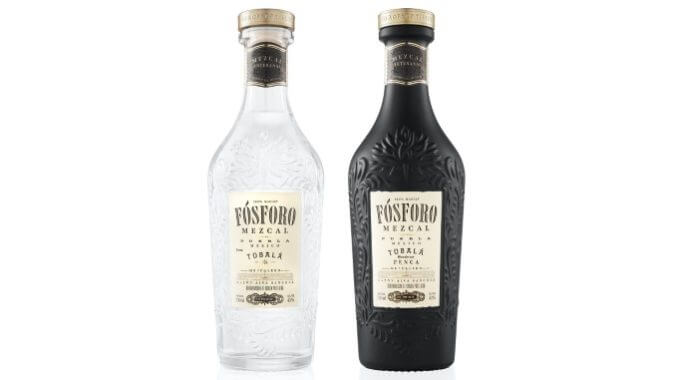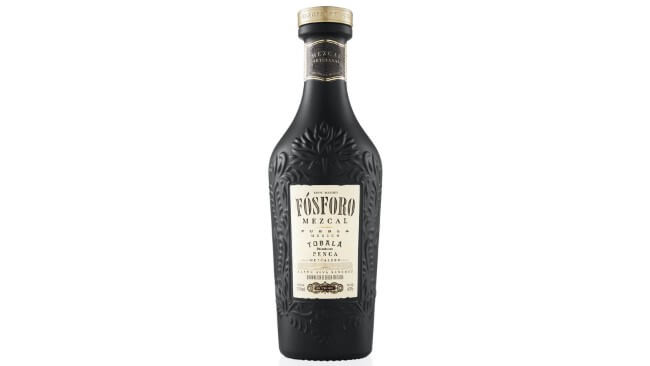Tasting: 2 Tobala Mezcals from Fosforo
Photos via Fosforo Mezcal
The average, workaday tequila consumer, if they’re aware of the distinction between tequila and mezcal to begin with, tends to focus on the difference in flavor of the two spirits styles as a result of traditionally roasting agave in underground pits. Whereas the core (pina) of agave plants are typically steamed of baked in tequila production, the pit roasting exposes agave to a different cooking process that accounts for the more intense roast–and often smokiness–that mezcals then exhibit. Too often lost in the average consumer’s understanding, though, is one of the other important distinctions of tequila vs. mezcal, which is the types of agave involved. Where tequila can only be produced from blue weber agave by law, there is no such designation on the books for mezcal, meaning that more than 200 species of the native Mexican plant are all technically fair game. And although not all agave varieties are really suitable for making mezcal, many of them are used in various corners of the country … and companies like Fósforo Mezcal have used this fact to carve out unique niches for themselves in the spirits market.
Fósforo is a relatively new mezcal brand that first began to arrive on U.S. shelves last year, with two varities: Tobala and Penca. The company is the brainchild of longtime, histrionic CNBC Mad Money host Jim Cramer, but the most interesting thing about their production isn’t ownership but process. The company’s exclusive use of the Tobala variety of agave gives it an initial identity, but their additional method used to create Penca is really unique, something I haven’t seen before. Together, they create a duo of engaging, unusual flavors. So with that said, let’s get to tasting.
Fosforo Tobala MezcalMSRP: $99
The Tobala varietal of agave is known to be temperamental and labor intensive even by agave standards, taking 8-15 years to mature. Fósforo points to this reality when addressing the elevated MSRPs of their product line, pointing out that not many 100% Tobala mezcals really exist on the U.S. market–and those that do, tend to be equally expensive. Most commonly, mezcals are made with the likes of espadin agave, which Fósforo says are “often over-smoked to hide the true agave character of the plant.” Presumably, this implies that Fósforo Tobala features a somewhat more subtle smoke profile.
On the nose, what immediately stands out here is a clear impression of roastiness–not overt wood smoke specifically, but an intensely roasted/earthy/cooked character, redolent in roasted agave and a lot of nuttiness, with more than a little cocoa as well. The nose is a little on the sweet side, with hints of butterscotch, nutmeg, peppercorn and hot cocoa. On the palate, however, things turn in a bit more of an angular direction, boldly herbal and more overtly smoky. I’m getting bold mint and grassiness along with the roasted nuts, a combination of salty and herbal savory character. It’s likewise not quite as sweet on the palate as the nose at first suggested it might be, though the trailing aftertaste does put me in mind of toasted marshmallow. It’s important to note that all these flavors are pretty assertive and punchy in a general sense, the slightly elevated 45% ABV (90 proof) seemingly having amped up the volume of delivery. This certainly does not feel like it would get lost in a cocktail, in other words.
Fosforo Penca MezcalMSRP: $130

Fósforo’s Penca expression is where things turn in a really unexpected, intriguingly experimental direction, albeit one that seems kind of obvious in hindsight. After all, mezcal is a product of agave, and the core of the agave plant can only be accessed by the work of skilled jimadors who slice away the huge, sharp leaves that guard it. But what if those leaves were also roasted and used as a flavoring agent? Presumably they don’t yield anything in the way of fermentables, or we would have been making spirits from the leaves for centuries. But it turns out the leaves, known as penca, can be used to flavor the distilled spirit. When Fósforo makes Penca, they’re taking these leaves and aging the distilled spirit with roasted penca in glass carboys for a span or one to three months. This actually contributes more color than one might expect–the mezcal exists its secondary aging with a light golden hue, having picked up new flavors in the process as well. If you didn’t know better, you’d probably think from the visual that it was a reposado tequila, but no actual oak or wood was involved in the production of Fósforo Penca–just those parts of the agave plant that typically aren’t included in the flavor of the final product.
On the nose, Fosforo Penca actually seems a bit brighter to me, with an almost rhum agricole-esque grassiness joining the same roasted and nutty impressions found in the Tobala. At the same time, however, there’s a new caramelized sugar impression as well, adding caramel candied to the hint of butterscotch. On the palate, this one comes across feeling a bit more warm, with hints of caramel and clove joining the profile of the Tobala, along with a little bit of berry-like fruitiness. It still has the potent herbal flavors, but things feel rounded out in much the same way as barrel aging softens the edges of other agave spirits. The smoke, for instance, feels like it’s receded a little, or perhaps a little bit higher level of residual sweetness just makes it feel that way. Regardless, this is a fascinating evolution of the spirit, featuring an ingredient I’m not sure I’ve ever seen before.
All in all, Fósforo has found an interesting corner of the mezcal market to stake their claim. Fans of roasty and herbal agave spirits will want to give them a chance.
Jim Vorel is a Paste staff writer and resident beer and liquor geek. You can follow him on Twitter for more drink writing.







































